Pool Table Markings & Measurements
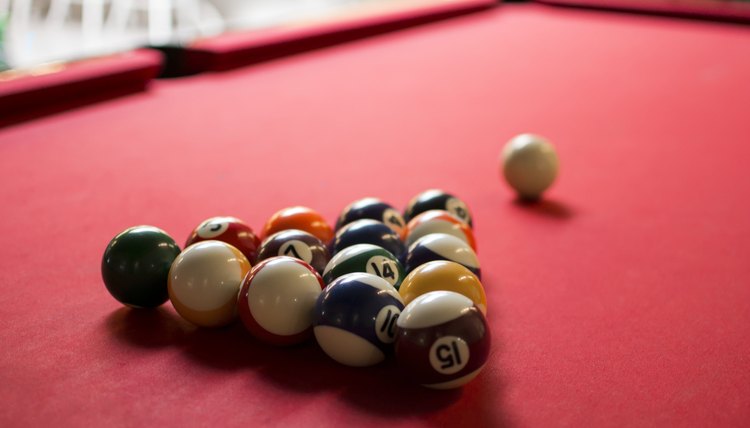
Professional quality pool tables are built to exacting dimensions. The World Pool-Billiards Association, or WPA, is a recognized international authority that defines the rules by which the game is played, including the markings and measurements of the table itself. The markings assist in playing, and the measurements ensure an accurate and consistent playing surface.
Table
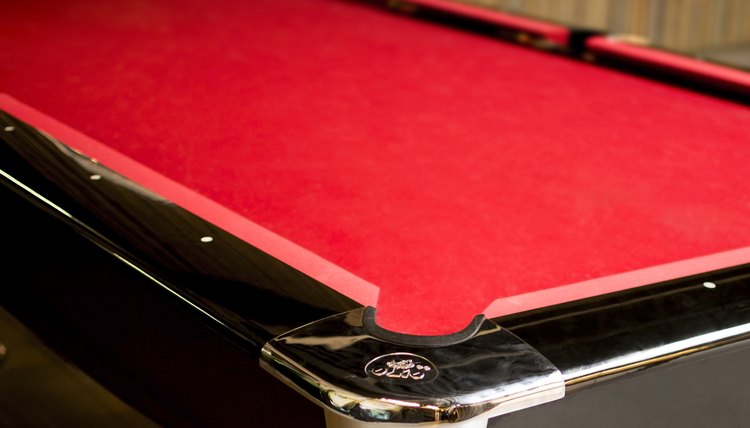
Yolanda Zaragoza Cano/Demand Media
According to WPA rules, a pool table playing surface is a rectangle that is twice as long as it is wide, plus 1/8 inch on both measurements. The height of the table must measure between 29 1/4 and 31 inches. The slate that forms the playing surface must measure at least 1 inch thick and hold a flatness tolerance within .02 inches along its length and .01 inches across its width.
Rails
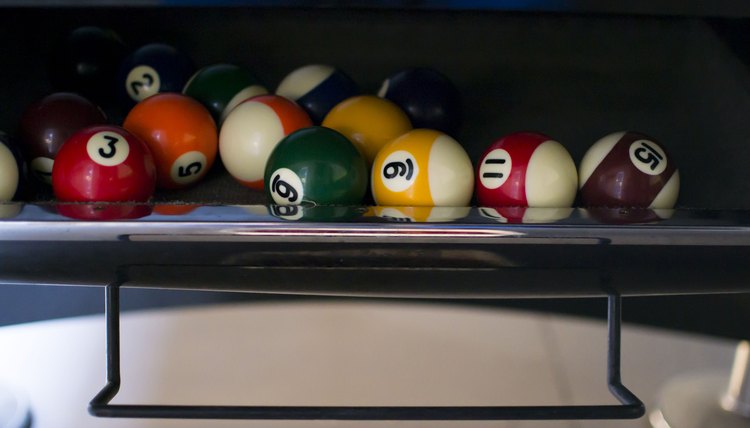
Yolanda Zaragoza Cano/Demand Media
Each side of the pool table called a rail. The rail at the end of the table where pool balls are racked is the foot rail. At the opposite end, where the player strikes the cue ball to break, is the head rail. The side rails extend from the head rail to the foot rail. By WPA rules, the width of the rail must measure between 4 and 7 1/2 inches, including the rubber cushions.
Cushions
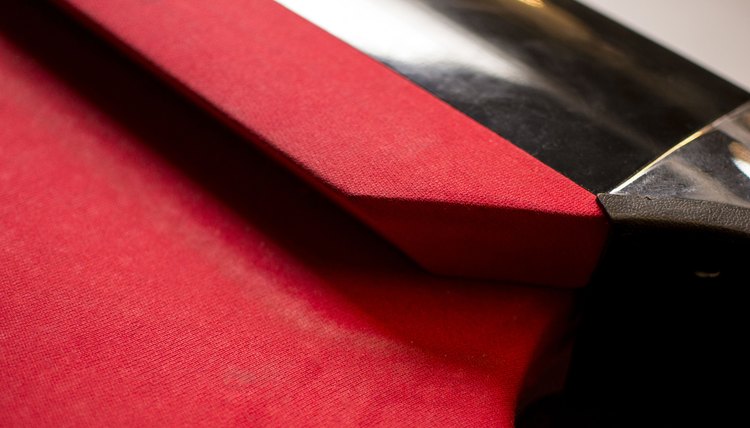
Yolanda Zaragoza Cano/Demand Media
The cushions are the rubber bumpers that line the inner rail edges. They are triangular with a base width of from 1 7/8 to 2 inches from the nose to the base of the cushion. The height of the cushion should be 63 1/2 percent of the diameter of a pool ball.
Strings
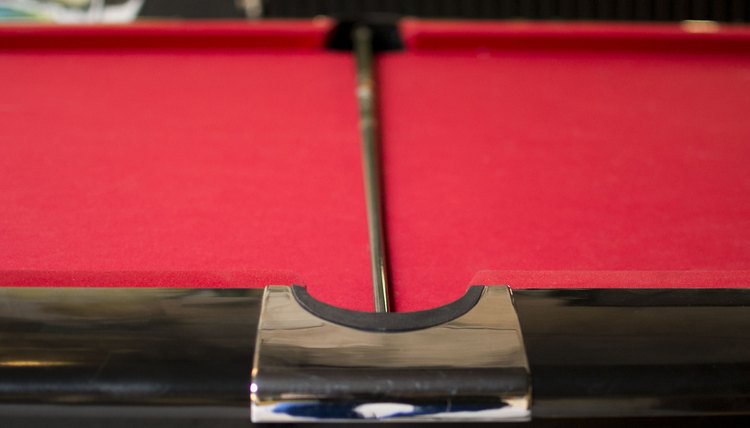
Yolanda Zaragoza Cano/Demand Media
A series of imaginary lines, called strings, break the pool table into sections. The long string divides the table down the center along its length. The center string extends across the table from the center of one side pocket to the other. The foot string locates the halfway point between the center string and the foot rail, and the head string the halfway point between center string and head rail.
Spots
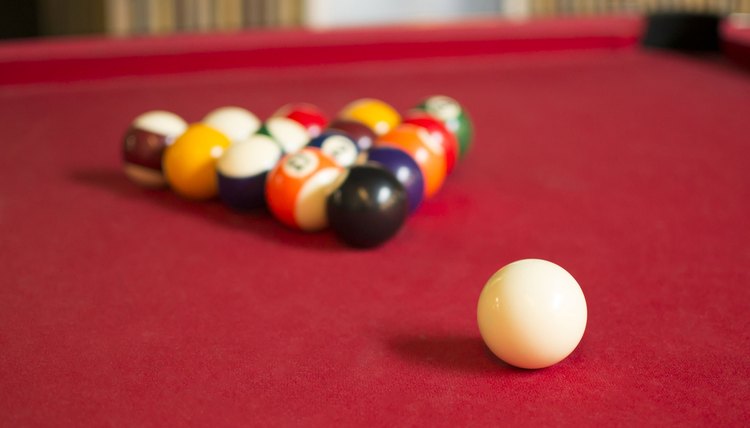
Yolanda Zaragoza Cano/Demand Media
Spots occur at the points where the long string intersects the other strings. Two spots are visibly marked on the table. The foot spot lies at the intersection of the foot string and the long string and acts as a positioning point for racking balls, with the apex ball placed over the foot spot. The head spot falls at the intersection of the head string and the long string and assists in placing the cue ball for breaking. The invisible center spot identifies the center of the table.
Sights
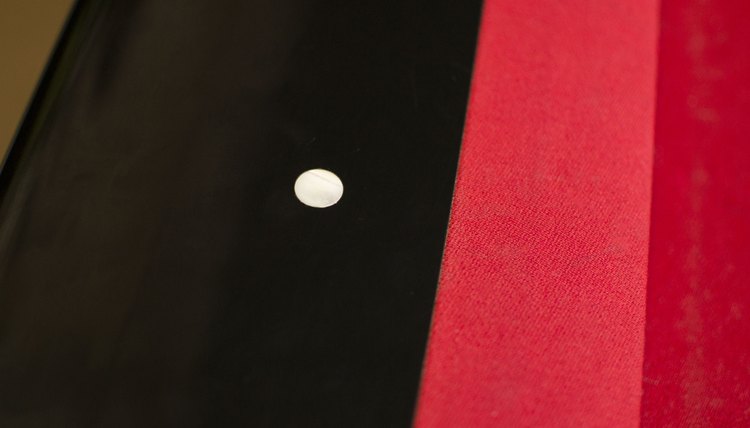
Yolanda Zaragoza Cano/Demand Media
Sights are visible, small round or diamond-shaped marks inset in the rails of the table. These marks identify the ends of the long, center, head and foot strings on the table. Other sights fall on either side of these string markers at an equal distance from sight to sight. There are 18 sights on a pool table.
Pockets
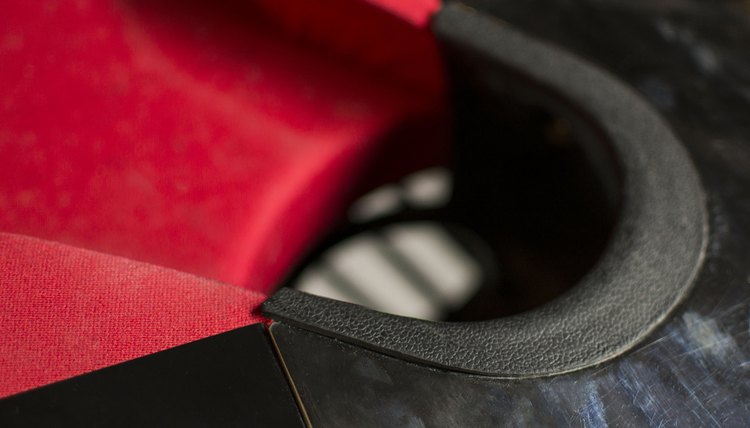
Yolanda Zaragoza Cano/Demand Media
By WPA rules, the mouth of each corner pocket is from 4.5 to 4.626 inches across. The side pocket mouth is traditionally 1/2 inch wider that the corner pockets, measuring from 5 to 5.125 inches across.
References
Writer Bio
In Jacksonville, Fla., Frank Whittemore is a content strategist with over a decade of experience as a hospital corpsman in the U.S. Navy and a licensed paramedic. He has over 15 years experience writing for several Fortune 500 companies. Whittemore writes on topics in medicine, nature, science, technology, the arts, cuisine, travel and sports.
